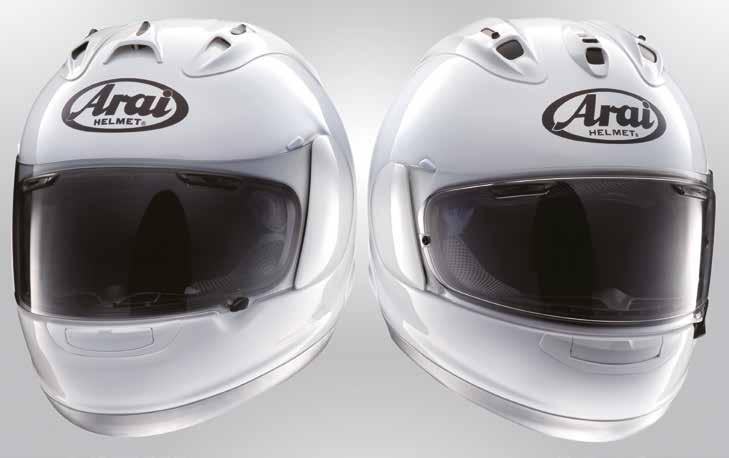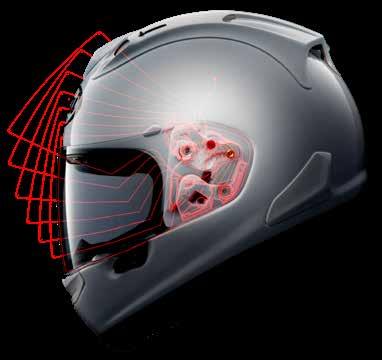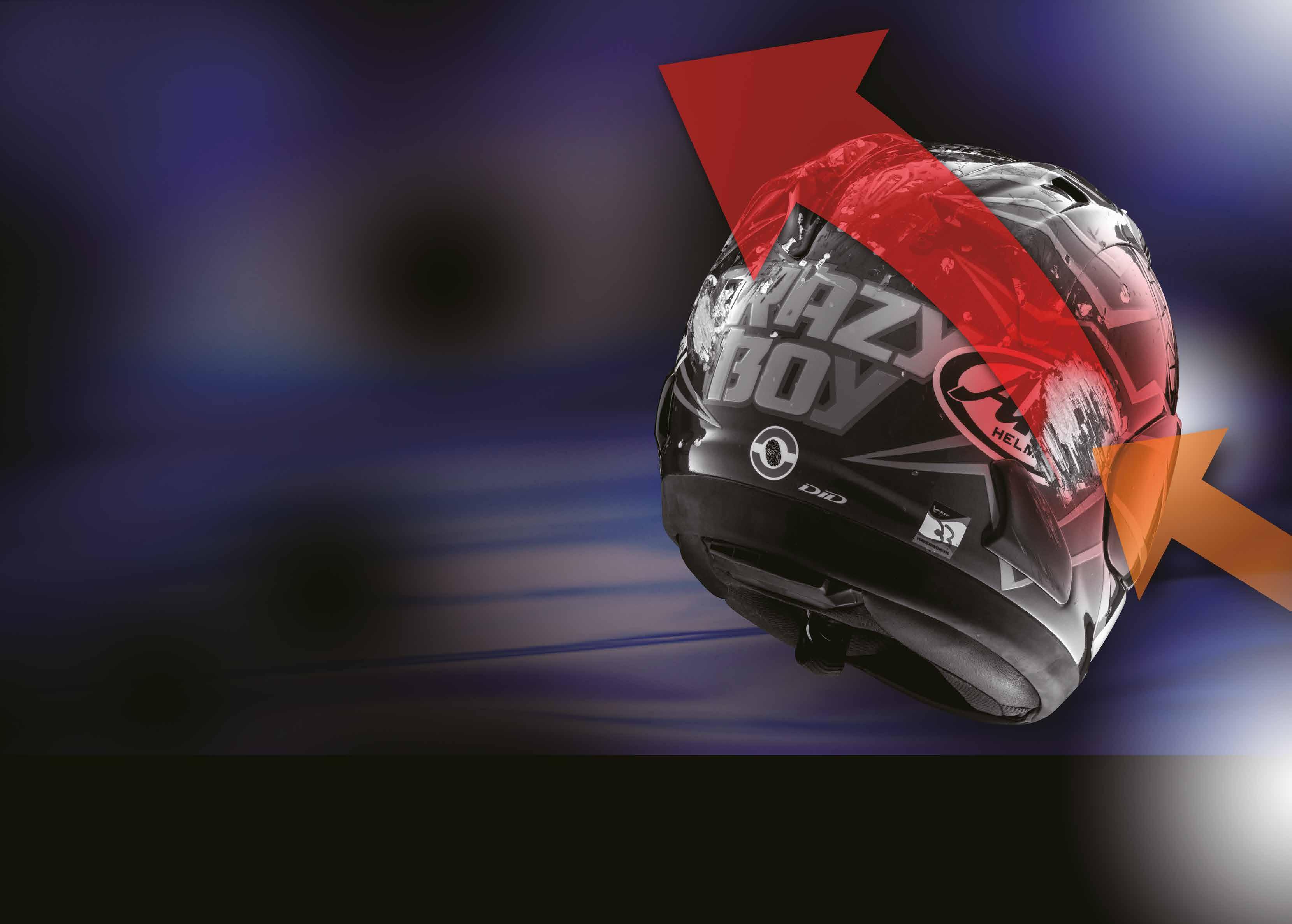
2 minute read
Variable Axis System
IMPACT ENERGY CAN BE DISCHARGED IF THE HEAD CAN KEEP MOVING.
The basic structure of the human head can be roughly divided into three components; scalp, skull and brain. The role of a motorcycle helmet is to minimize and manage impacts to the brain. Laboratory impact test standards vary somewhat, but generally all define
shock absorption levels. Those levels are tested by dropping a helmet, with a steel head form from a predetermined height onto a steel anvil. The G meters within the head form measure the G forces sustained in these drop impacts to verify the impact absorption performance. Standards such as Snell set the test criteria quite high to obtain certification approval. Under impact the helmet acts as a buffer, the outer shell displaces the energy and the inner liner absorbs the energy as it crushes, slowing the impact speed. The examination of the impact energy management performance of the standard is very different from an accident which occurs in an unpredictable and severe environment. The kinetic energy of a moving object increases in proportion to the square of the speed. Therefore, a street rider, traveling at legal limit, can carry up to more than 10 times the amount of kinetic energy. No helmet, regardless of brand or design, can be expected to manage such energies.
Keep smoother and rounder within the test area.
Therefore, Arai believes that ”Glancing off” performance would be important to divert energies by keeping the head moving. For potential impacts with energies above those of the standards, and even above what a helmet might be able to deal with directly, Arai has always tried to make helmets rounder, smoother and stronger throughout its long history. However, even at Arai there are limitations to how round and smooth a helmet can be due to the restrictions of a single pivot shield mechanism. The geometry of current shield systems require a high pivot position. This high pivot point falls within the test area of the standard, across the test boundary lines at the left and right temple area.
The shield is attached to the helmet with a mounting/pivot mechanism. To maintain a smooth/flush transition from shield to shell, the shell area where this mechanism attaches must have some depression or recess. The current shield systems, with some portion of the mechanism within the test area, prevent the shield from maintain a smooth and contiguous curved surface. VAS is a completely new shield system with a mechanism invented with the sole purpose of eliminating this intrusion into the test area, allowing the shell along the test line at the temples to be made smoother. The new smoother shape is the next generation that aims to further improve on the original mission.
Through decades of experience with real world road and track scenarios, Arai has developed a helmet compiled of detail upon detail that work together and improve the protective capacity of the helmet.
SAI shield RX-7 GP
VAS shield
RX-7 V
EVOLUTION OF THE RX-7V: The world’s first shield system to get so close to the ideal shell form.


Virtual Axis Track Variable Axis System (VAS)






